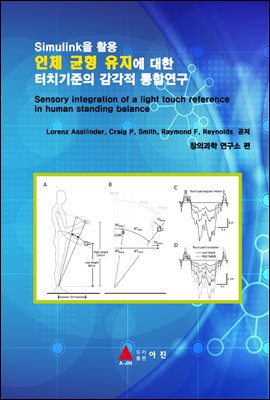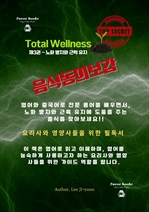
인체 균형 유지에 대한 터치기준의 감각적 통합연구
- 저자Lorenz Asslander, Craig P. Smith, Raymond F. Reynolds 저
- 출판사아진
- 출판일2020-07-10
- 등록일2020-12-21
- SNS공유


- 파일포맷PDF
- 파일크기28MB
- 공급사YES24
-
지원기기
PC
PHONE
TABLET
프로그램 수동설치
전자책 프로그램 수동설치 안내
아이폰, 아이패드, 안드로이드폰, 태블릿,
보유 1, 대출 0,
예약 0, 누적대출 5, 누적예약 0
책소개
In upright stance, light touch of a space-stationary touch reference reducesspontaneous sway. Moving the reference evokes sway responses which exhibit
non-linear behavior that has been attributed to sensory reweighting. Reweighting
refers to a change in the relative contribution of sensory cues signaling body sway
in space and light touch cues signaling finger position with respect to the body.
Here we test the hypothesis that the sensory fusion process involves a
transformation of light touch signals into the same reference frame as other
sensory inputs encoding body sway in space, or vice versa. Eight subjects lightly
gripped a robotic manipulandum which moved in a circular arc around the ankle
joint. A pseudo-randomized motion sequence with broad spectral characteristics
was applied at three amplitudes. The stimulus was presented at two different
heights and therefore different radial distances, which were matched in terms of
angular motion. However, the higher stimulus evoked a significantly larger sway
response, indicating that the response was not matched to stimulus angular
motion. Instead, the body sway response was strongly related to the horizontal
translation of the manipulandum. The results suggest that light touch is integrated
as the horizontal distance between body COM and the finger. The data were well
explained by a model with one feedback loop minimizing changes in horizontal
COM-finger distance. The model further includes a second feedback loop
estimating the horizontal finger motion and correcting the first loop when the
touch reference is moving. The second loop includes the predicted transformation
of sensory signals into the same reference frame and a non-linear threshold
element that reproduces the non-linear sway responses, thus providing a
mechanism that can explain reweighting.
목차
제 1편 : SIMULINK 기본편1.1 SIMULINK의 시작 1
블록의 연결 5
블록 파라미터의 설정 7
시뮬레이션 파라미터 (Configuration Parameters)의 설정 8
시뮬레이션의 수행 9
블록 파라미터의 표시 9
복수 데이터의 표시 11
2.2 동적 시뮬레이션 13
이차 미분방정식 17
선형 상태변수 모델 23
DC 모터의 시뮬레이션 24
함수 블록의 사용 29
차분방정식(difference equation)의 모델링 34
Subsystem(부시스템)의 구성 37
제 2편 : 연구논문
Sensory integration of a light touch reference in human standing
balance
1. Introduction 41
2. Materials and methods 43
3. Experimental setup 44
4. Data analysis 45
5. Angular stimuli and sway responses 48
6. Discussion 54
7. Limitations 57
8. References 59

















